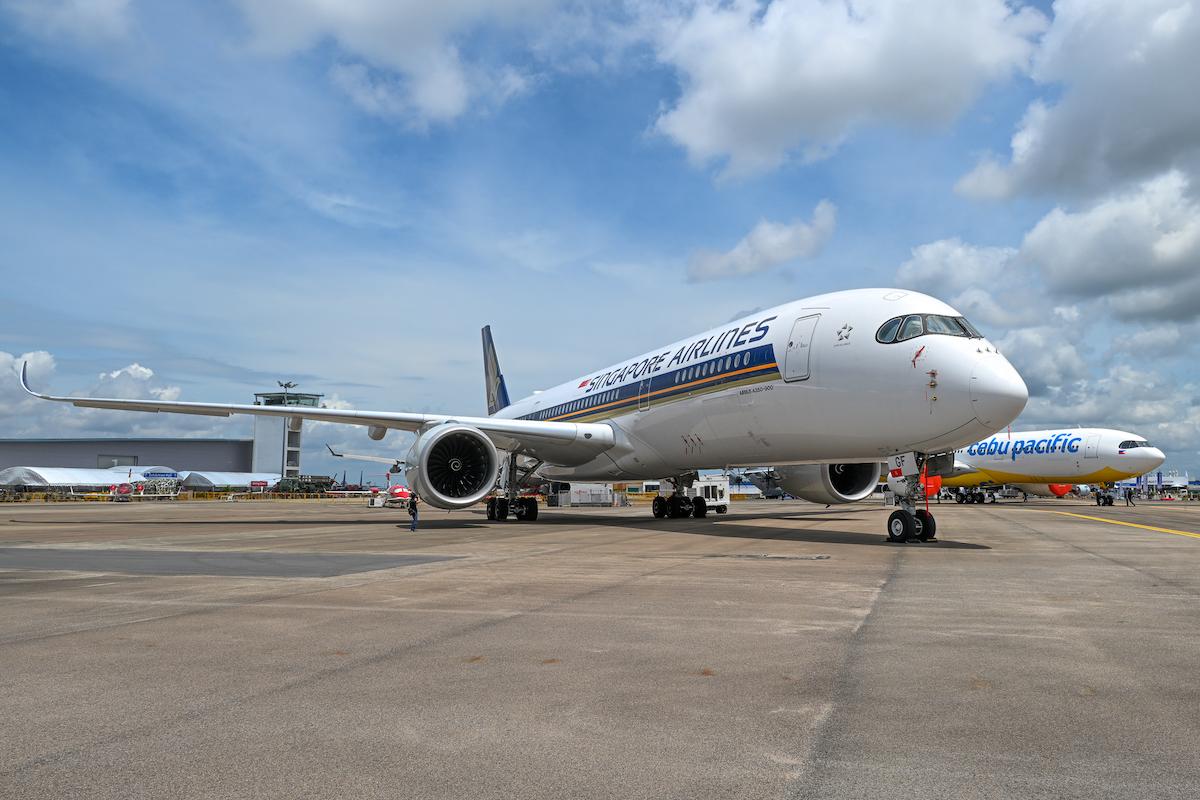Airliner OEMs Temper Expectations In A Region Still Struggling To Recover

With an eye on the future versus hopes for a rebound in near-term orders, the major airliner manufacturers are attending the Singapore Airshow to maintain customer connections and visibility in a region that has long been the biggest air transport growth market.
Airbus, Boeing, ATR and Embraer will all exhibit at the show this week, but with tempered expectations. With long-haul international travel demand still at all-time lows because of COVID-19-related border and testing restrictions, Asia-Pacific remains the worst hit region. IATA full-year figures showed that Asia-Pacific airlines’ international traffic was down 93.2% in 2021 versus 2019. While some countries are slowly re-opening borders, the international traffic decline was still down a grim 87.5% in December compared to two years prior. Full-year capacity was down 84.9% compared to 2019, while load factors fell 44.3 percentage points to a meagre 36.5%.
But the OEMs know this is still an important region for future growth and sales. “We forecast that Asia-Pacific, including China, requires more than 3,000 aircraft under 150 seats in the next 20 years,” Embraer Commercial Aviation Asia-Pacific VP Raul Villaron said ahead of the show’s opening. “Crossover jets like the E-Jets -E2 and the first-generation E-Jets play an essential role in enabling airlines to open, develop, and grow their networks profitably. The airlines that incorporate these jets into their strategy are also able to adapt dynamically to fluctuations in market demand and capacity needs, while protecting the bottom line.”
Embraer has brought an E190-E2 dubbed the TechShark to the show.
Airbus, meanwhile, is placing the A350-1000 center stage; the widebody is scheduled to participate in the flying display, while also featuring a Singapore Airlines A350-900, a Cebu Pacific A330neo and a Korean Air A220 in the static park.
A major attraction at the Dubai Airshow in November was the Boeing 777X flight test aircraft, where it made its air show debut. This week, the aircraft will be seen at an Asia-Pacific air show for the first time, joining the flying display.
Boeing's latest Commercial Market Outlook forecasts the Southeast Asia fleet will grow 5% by 2040, resulting in demand for more than 4,400 new airplanes valued at $700 billion. Narrowbodies will account for more than 80% of the deliveries, Boeing says, which will connect the region’s domestic routes and serve key leisure routes between China and Northeast Asia. Widebody orders, including freighters, will total more than 800 in that timeframe.
Sustainability is a key focus for all the airliner OEMs, which recognize its rapidly growing importance to the air transport industry in general and the Asia-Pacific region specifically. All the manufacturers—of airliners and engines—are emphasizing the fuel efficiency and low emissions of their newest products.
“We will highlight our investment in, and commitment to, technology, innovation and sustainability, building the foundation for the long-term growth of the aerospace industry,” Boeing Southeast Asia president Alex Feldman said.
Embraer stressed its commitment to developing products and technologies that contribute to the global aviation industry’s goal of achieving net zero emissions by 2050. Embraer aims to be carbon neutral by 2040 and achieve carbon neutral growth from 2022. It plans to implement 25% sustainable aviation fuel (SAF) use in its operations by 2040 and 100% renewable energy sources by 2030.
